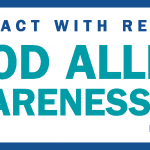How is EoE Related to Food Allergies?

Eosinophililic Esophagitis (EoE)
EoE is an increasingly recognized, chronic disorder that results when eosinophils (a type of white blood cell usually associated with allergic disorders) infiltrate an individual’s esophagus. In young children EoE often presents with symptoms of persistent abdominal pain, nausea, vomiting and poor appetite, which may result in difficulty gaining weight.
Teenagers and adults with this disorder often complain of acid reflux symptoms (“heartburn”, “indigestion”) and solid foods getting stuck in the esophagus. With continued inflammation of the esophagus, individuals may develop strictures, which are bands of tissue that narrow the esophagus and prevent food from passing through easily.
Food allergy may play a role in approximately 50% of individuals with EoE. Foods most commonly implicated in EoE include milk, wheat, soy, egg, peanuts, tree nuts and seafood. Food allergy testing methods used in evaluating EoE include allergy skin prick testing, serum IgE testing, and patch testing. More than one kind of food allergy testing may be needed to identify foods suspected of driving the inflammation.
The only way to correlate the results of food allergy testing with EoE is to obtain biopsies of the esophagus before and 2-3 months after eliminating the food(s) in question. Because dietary restrictions may lead to nutritional deficiencies and esophageal biopsies require anesthesia, the potential benefits and risks of such interventions must be considered carefully on a case-by-case basis.
An individual’s medical history and symptoms are important in suggesting the diagnosis of EoE. Other common gastrointestinal disorders (e.g., gastroesophageal reflux) should be ruled out. A diagnosis of EoE is confirmed with esophageal biopsies obtained by an esophagogastroduodenoscopy (EGD).
This procedure, which is performed by a gastroenterologist, involves inserting a flexible scope through the mouth and down the esophagus while the patient is under sedation. The doctor examines the lining of the esophagus, stomach and the first segment of the small intestine for signs of eosinophilic inflammation and takes small pieces of tissue to be examined by a pathologist. The presence of high numbers of eosinophils on esophageal biopsies supports a clinical diagnosis of EoE.
As is the case with most chronic inflammatory disorders, EoE is more easily diagnosed than treated. Swallowing an inhaled topical corticosteroid medication (e.g., Flovent™ or Pulmicort™) on a daily basis represents the cornerstone of treatment. It may be necessary to take one of these medications for months or even years to keep the inflammation under control. Fortunately, these medications are poorly absorbed from the gastrointestinal tract into the bloodstream, so side effects are minimal with long term use.
EoE is a chronic, potentially lifelong condition. With the right treatment plan, however, individuals with this disorder can live full and productive lives.




